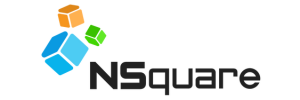
Empowering Innovation: Navigating the AI Hub in Microsoft Dynamics 365
Emerging Power of Artificial Intelligence:
In the realm of computer science, Artificial Intelligence (AI) represents a multidisciplinary field dedicated to the development of systems that exhibit human-like intelligence. It involves the creation of algorithms and computational models that enable machines to perform tasks traditionally requiring human cognitive abilities.
AI applications span diverse fields, from autonomous vehicles and healthcare diagnostics to virtual assistants and recommendation systems. As AI continues to advance, ethical considerations around responsible AI development and deployment are gaining importance.
In essence, AI strives to replicate and augment human intelligence through computational systems, revolutionizing industries and fostering innovation across various domains. The continuous evolution of AI technologies promises to shape the future, unlocking new possibilities and transforming the way we live and work.
AI In Power Automate
In the digital era, businesses are drowning in a sea of documents, from invoices and contracts to forms and reports. The manual handling of these documents not only consumes valuable time but also introduces the risk of errors. Enter Automated Document Processing (ADP) with Microsoft Power Automate – a dynamic solution that transforms document workflows, saving time, and enhancing accuracy. Let's explore the steps to harness the full potential of ADP using Power Automate.
Access Power Platform:
Log in to your Microsoft Dynamics 365 environment and navigate to the Power Platform.
Open AI Builder: Within the Power Platform, locate and open the AI Hub.
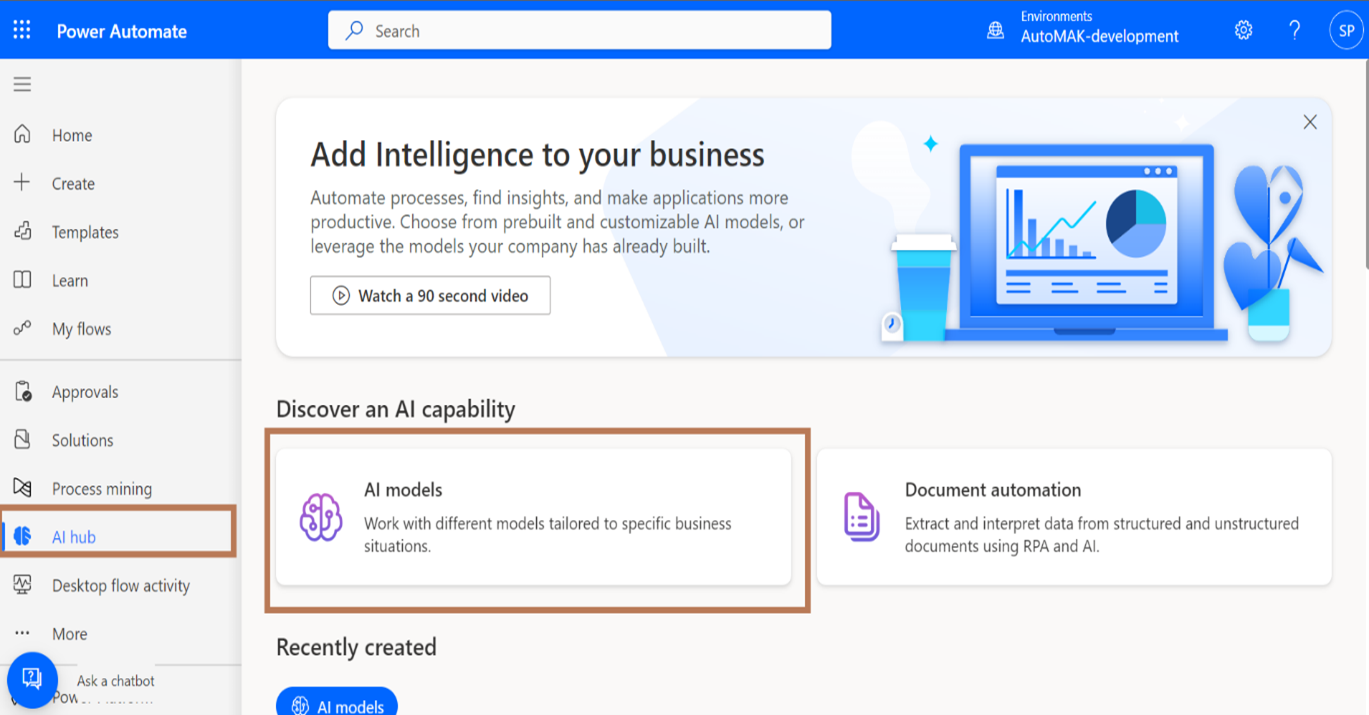
Create a New Model:
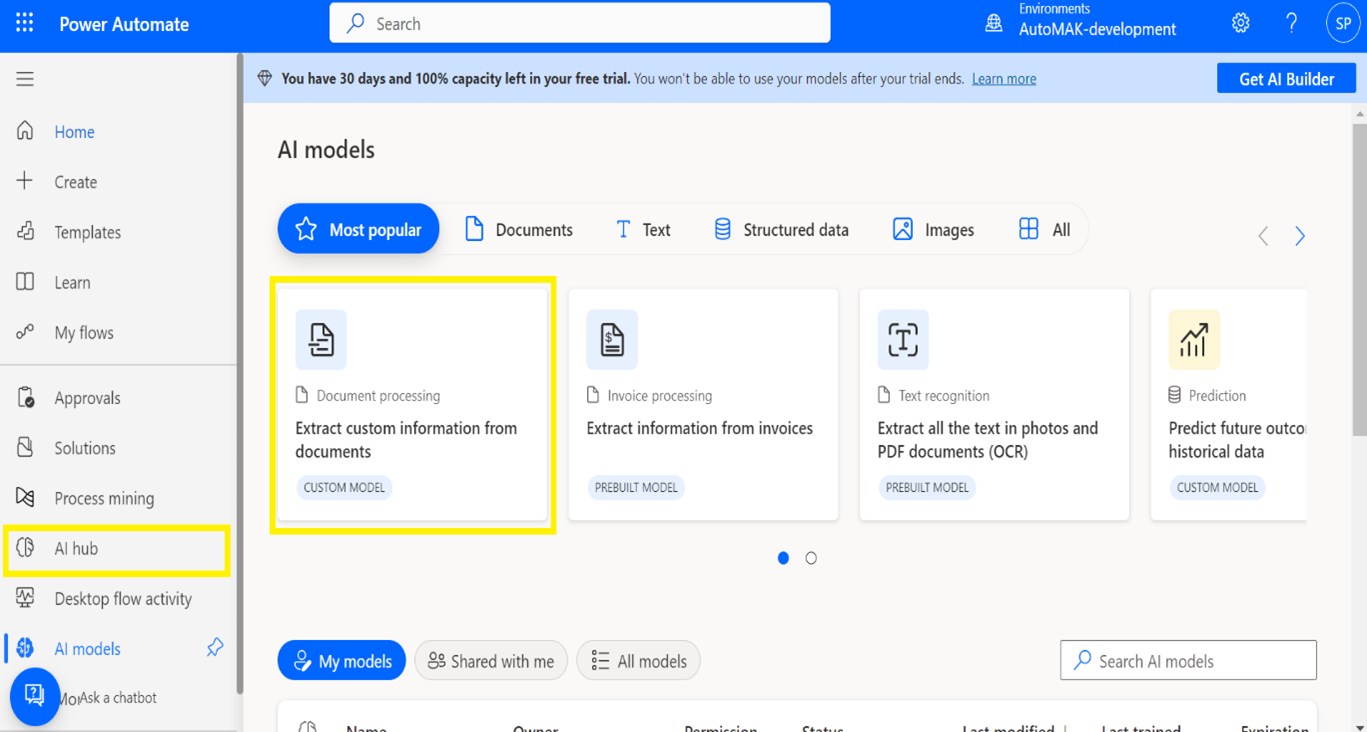
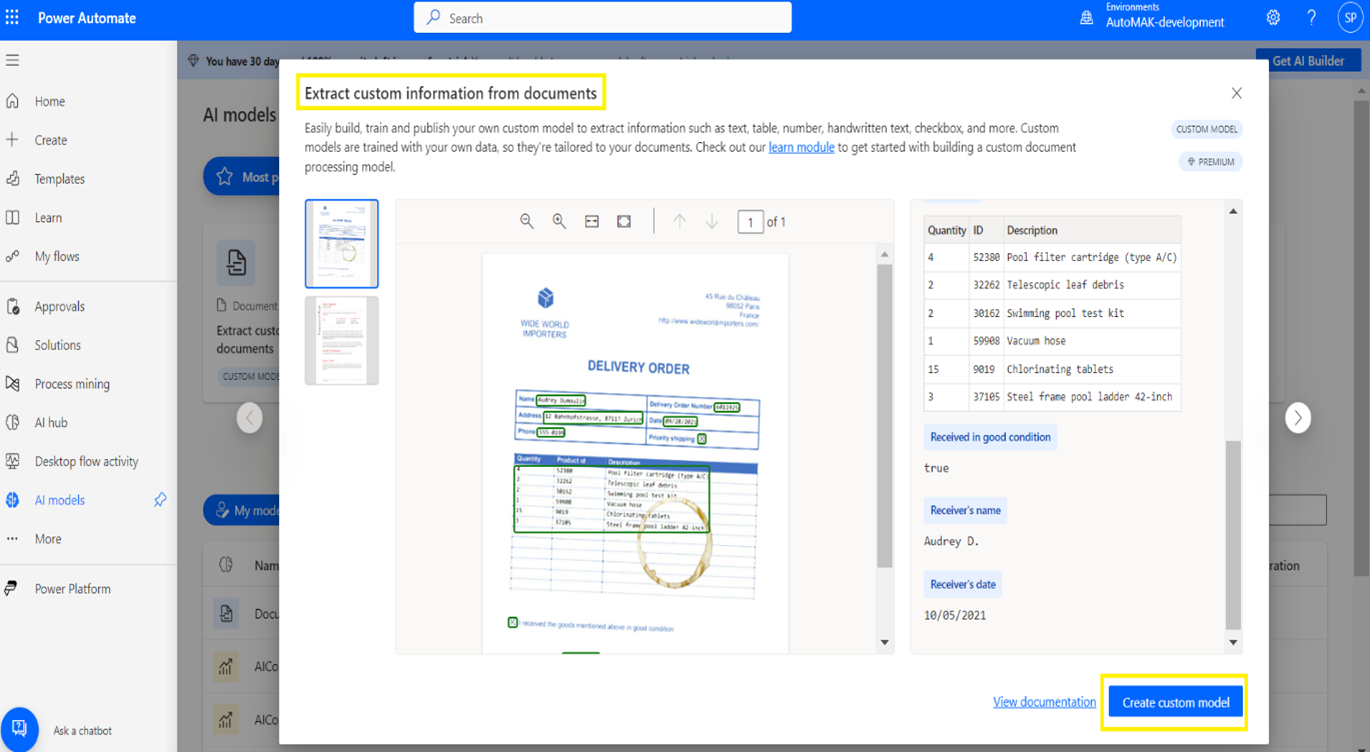
Start the process of creating a new model and choose the document processing model type.
Define Document Types:
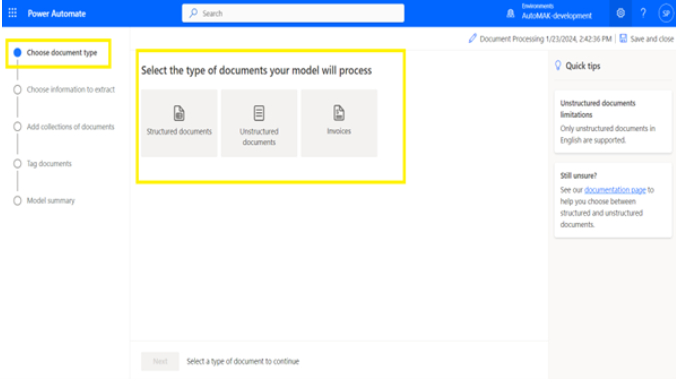
Specify the types of documents you want to process, such as invoices, receipts, contracts, or other relevant document types.
Set Extraction Fields:
Define the specific information you want the model to extract from the documents. This could include fields like dates, amounts, names, etc.
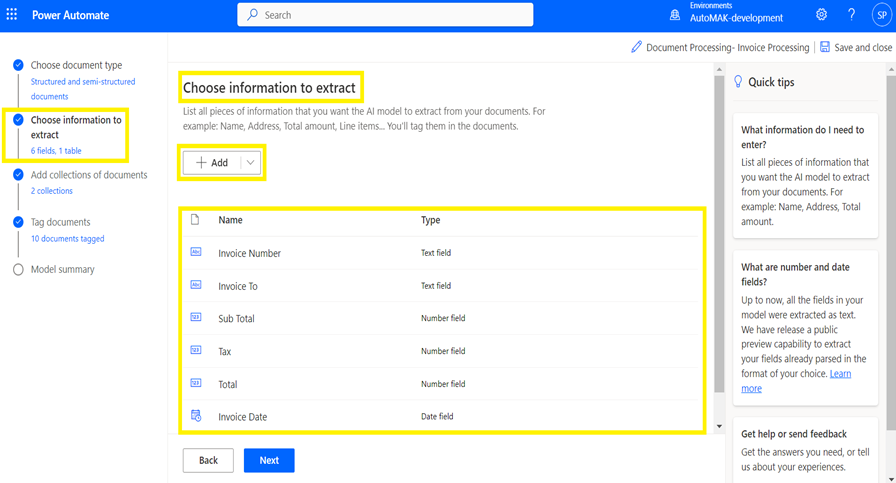
Add a collection of documents:
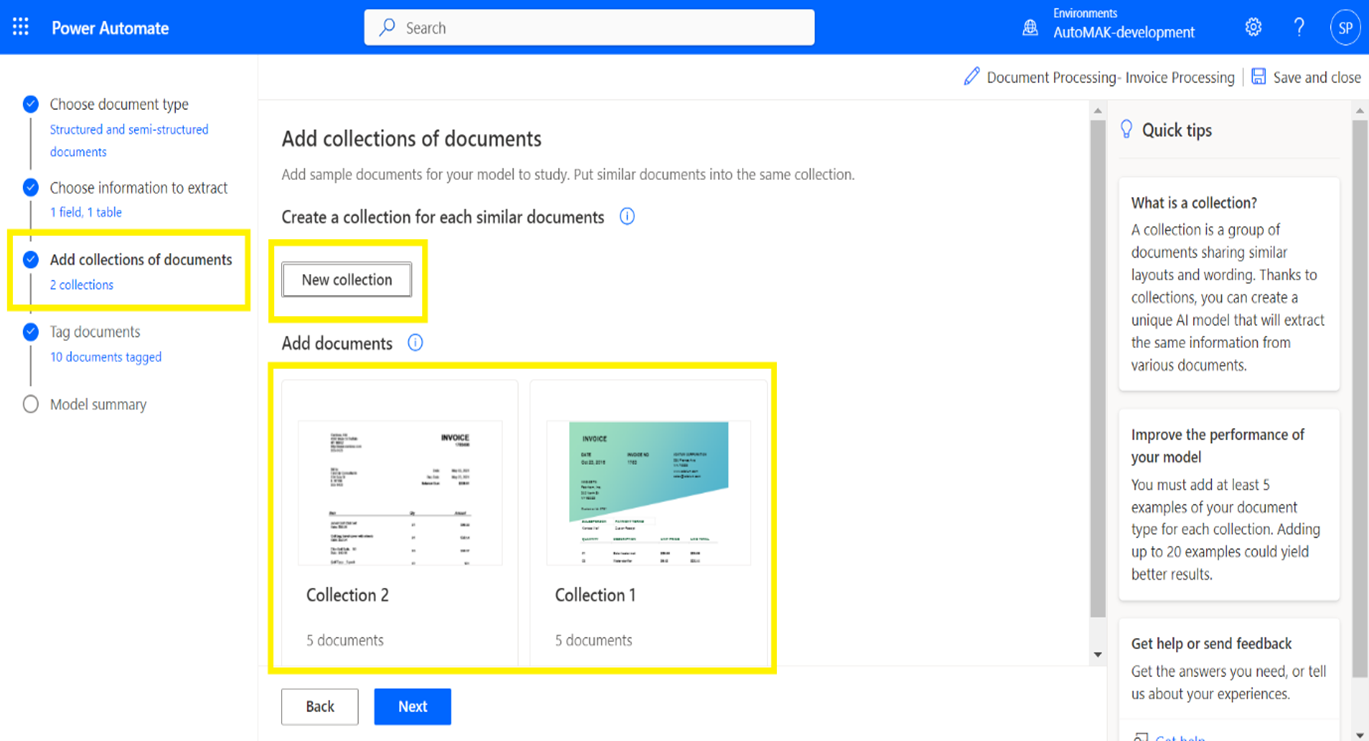
Upload a set of sample documents that represent the diversity of formats and layouts the model may encounter.
Train the Model:
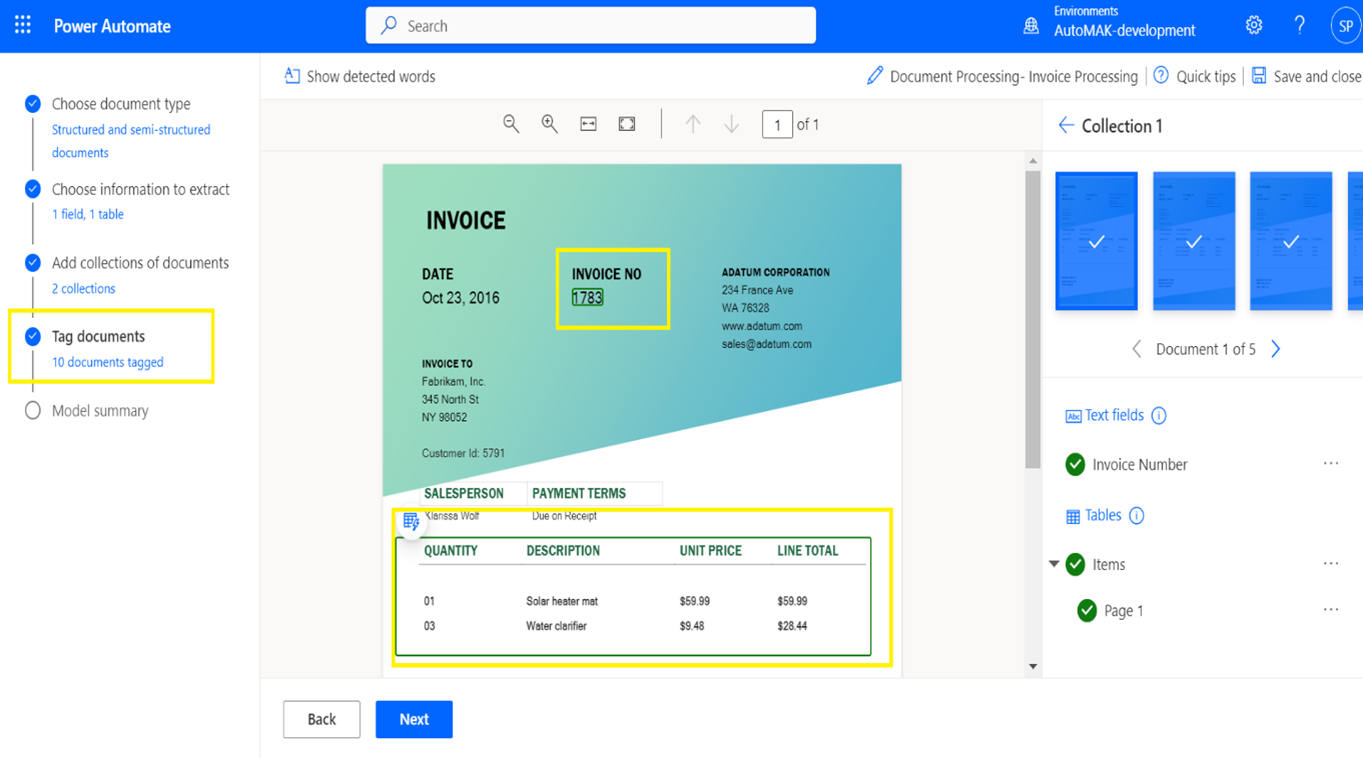
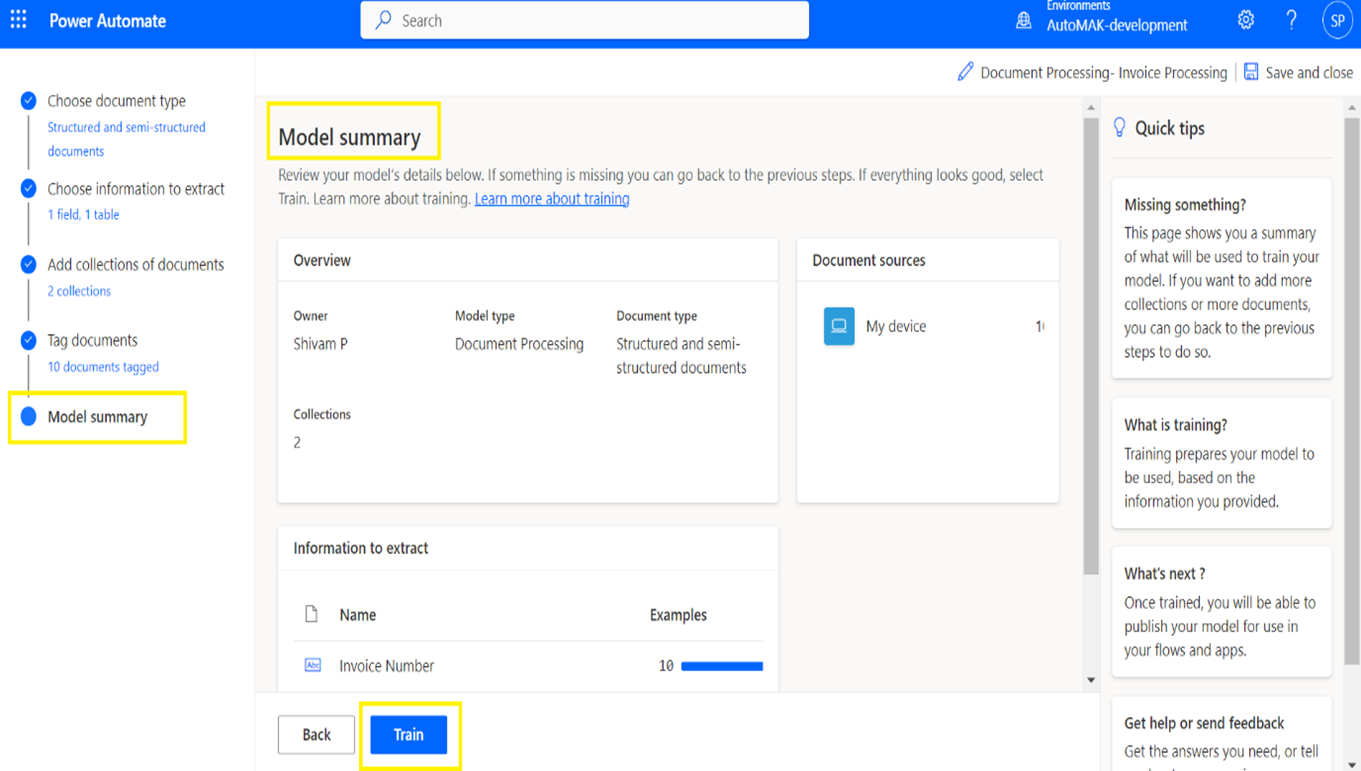
Train the model to recognize and extract key data fields from these documents.
Test the Model:
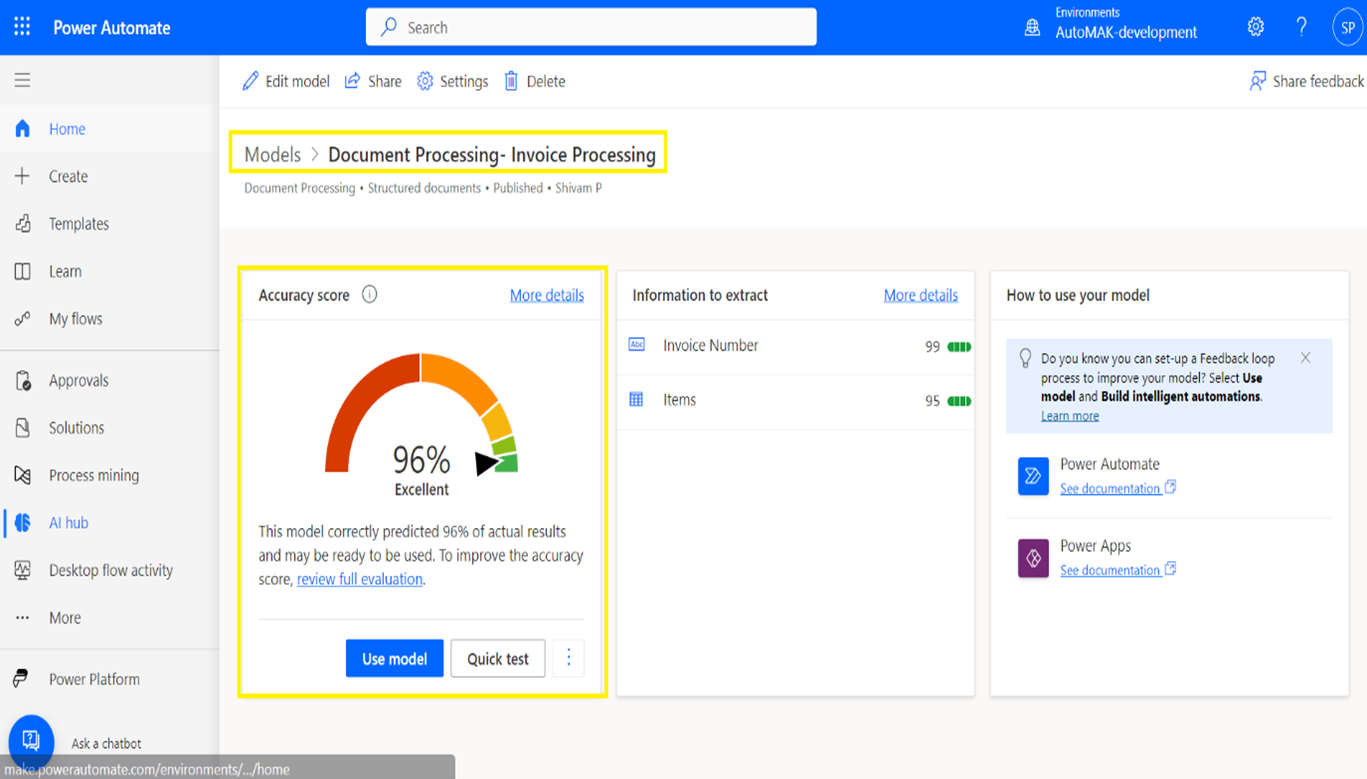
Test the trained model using additional sample documents to ensure accuracy. Adjust the model as needed to improve performance.
Integrate with Dynamics 365:
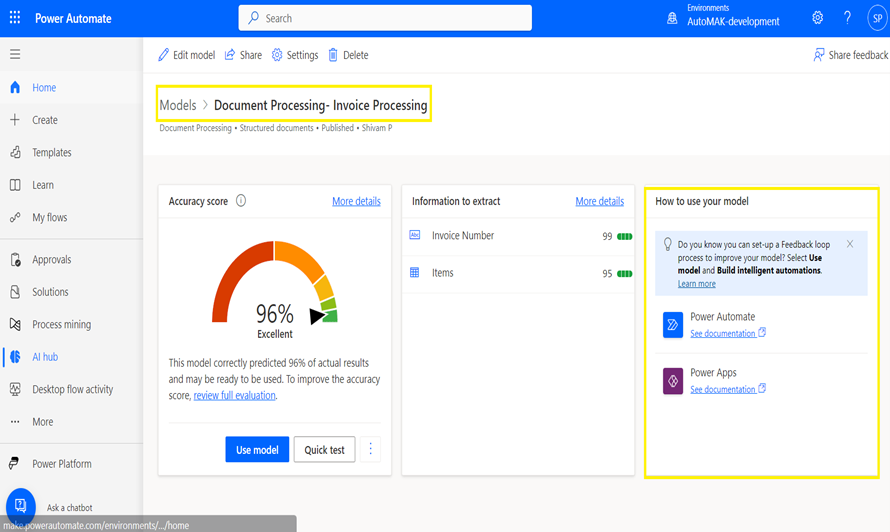
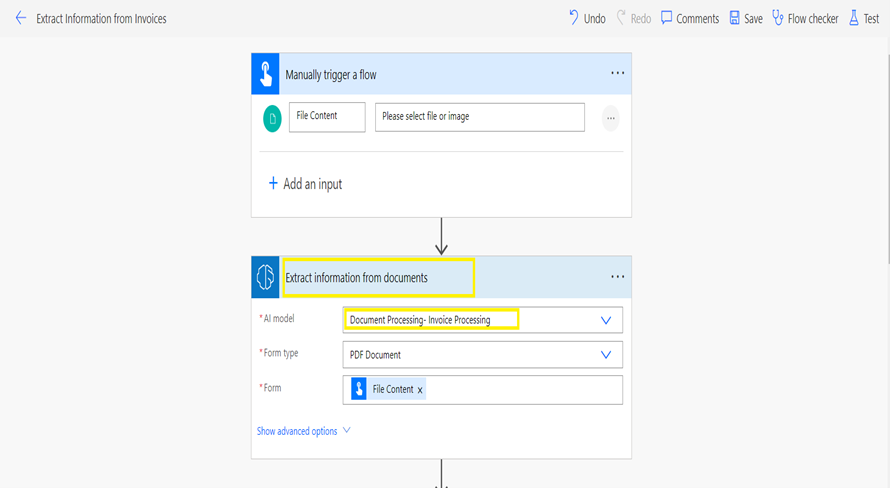
Integrate the deployed document processing model into your Dynamics 365 applications or workflows, allowing it to automate document-related tasks.
Monitor and Optimize:

Regularly monitor the model's performance and make optimizations as necessary. Update the model if there are changes in document formats or if improvements can be made.
Conclusion:
As technology continues to advance, the future of document handling lies in the hands of Automated Document Processing. The synergy of AI, automation, and adaptability will redefine how organizations approach document workflows, unlocking unprecedented efficiency and agility.
Let's talk
Leave your details and one of our experts will contact you!
